How to create a short targeted yoga practice to change your mental state
5When you want to change the way you think or feel at any given moment, the first thing you need to do is identify what exactly it is that you are experiencing right now. Are you tired? Irritated? Frazzled? Impatient? Sad? Disappointed? Something else? The simple act of acknowledging how you feel is a useful therapeutic tool for decreasing the emotional charge. It works because your limbic system (more emotional part of the brain) and your prefrontal cortex (more rational part) tend to work like a seesaw – stronger activation in one area diminishes activation in the other. “When your limbic system becomes aroused, the resources available for your prefrontal cortex decrease. However, this works the other way, too. Increasing the arousal of the prefrontal cortex can dampen down the arousal of your limbic system. You can make this switch happen by trying to find the right word to identify an emotional sensation, a technique that is called symbolic labeling.” (1) This will serve as a jump off point for your yoga practice.
Here is a simple template for creating a short yoga practice to change your mental state. Let’s use it to create a practice to deal with strong emotions.
1. Identify the state that you are currently in – point A – and where you would like to end up (realistically) – point B. In this example we will try to move from being mildly irritated (point A) toward feeling more balanced and clear (point B).
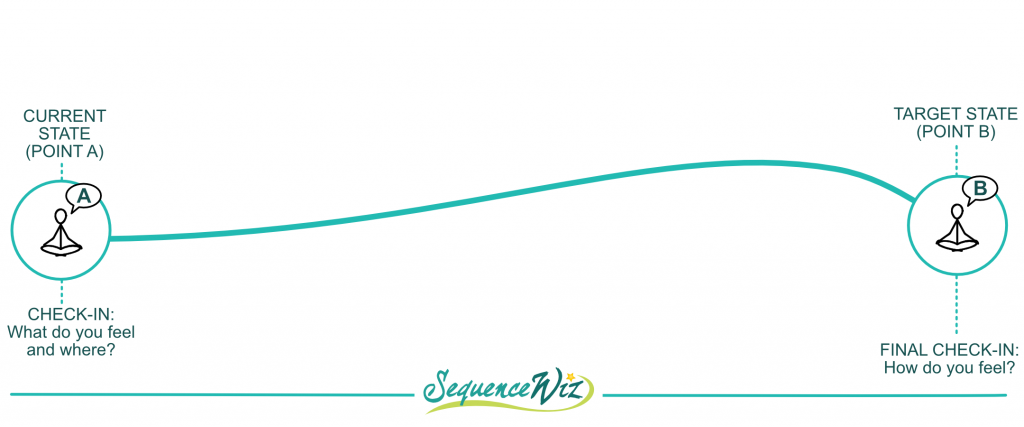
2. Think of a main theme for your practice that could help you move from point A to point B, and which meditation/reflection would cultivate that theme. If you find yourself lost in the sea of possibility, or if nothing at all comes to you, it is always useful to fall back on the images of basic elements and their qualities: fire can be purifying and clarifying, water is flowy and powerful, air is light and spacious, earth is nourishing and essential to growth. You can also use images from nature, like trees (that are grounded via roots, yet can move with the wind), mountains (that are sturdy and peaceful), sun (which is warming and life-giving), and even hurricanes (that spin fast, yet have a very quiet place in the center). In our example, the main theme will be purification, and we will use the image of fire. Since we are dealing with emotions, we will want to use the energy of emotion as fuel for an imaginary fire to purify and bring more clarity. We will use the fire to purify the three main sites of the body where you might experience an emotion: head, chest and belly.
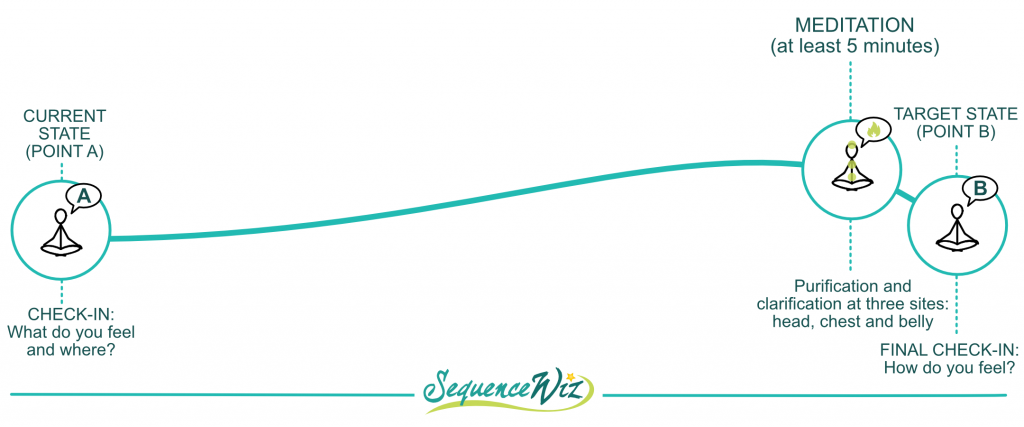
3. Assess the energetics of your practice. Will this be a Brhmana, Langhana or Samana (balancing) practice? The choice should be directly linked to your theme. This will guide your selection of poses and breath patterns. (Our practice will be Samana because we want to both purify (Langhana quality) and enhance (Brhmana quality). So we will use the elements of both practices and add Kapalbhati (purification Kriya).
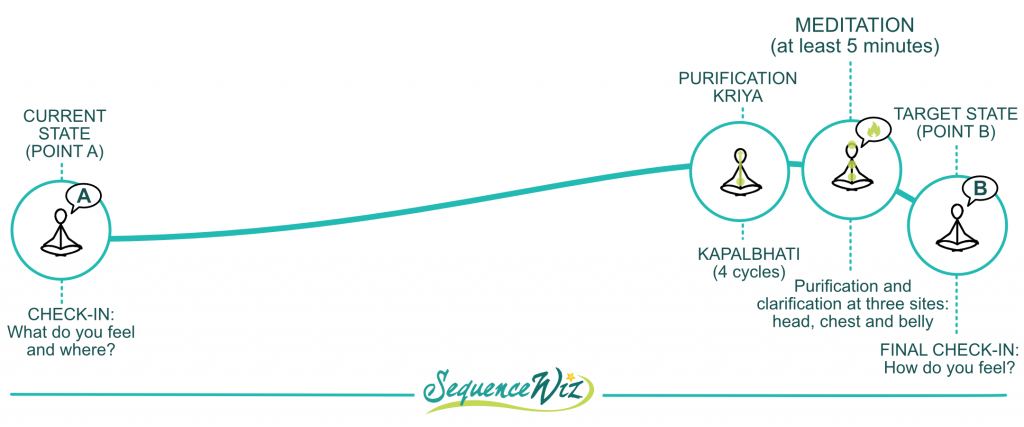
4. Think of how you can anchor your main theme in your body with poses and symbolic gestures. Pick two-three poses where you will manifest that idea. These will be your Core Poses. (We will use the gesture of touching the head, chest and belly with hands to bring attention to those areas. We will do this gesture in Sukhasana, Vajrasana and part of Virabhadrasana 1.)
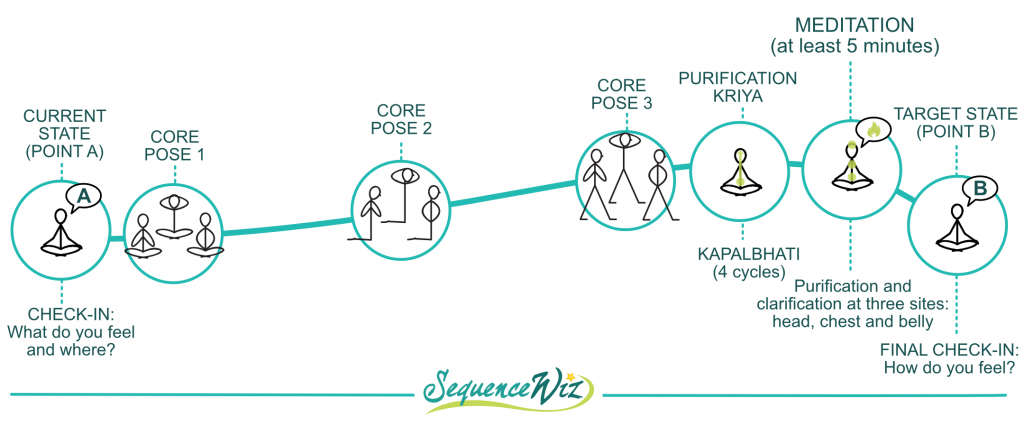
5. Pick two-three Compensation Poses for your Core Poses that can also be used to support the main theme. (We will use Cat-Cow and Uttanasana to mentally follow the air as it moves through the head, chest and belly).
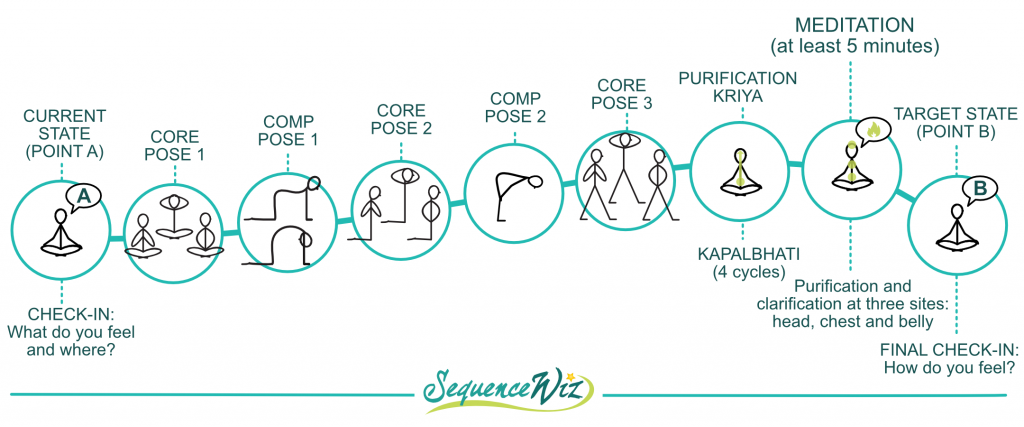
And that’s it! You can change your starting and ending position, but generally speaking, for mind-centered practice it is best to start and end in a comfortable sitting position (on the floor, bolster, blanket or chair). This allows you to establish your theme and to deepen the breath at the very beginning of the practice, and then to observe the effect of the practice at the end. If you choose other starting and/or ending positions, you need to have good reasons for it.
Whatever you do, be sure to stay present with your experience for the entire practice. At the end of the practice take time to assess whether or not you were able to get to your target state, and analyze which elements seemed to work and which ones didn’t. It’s always best to be honest with yourself about your findings. You can use that information next time to fine-tune your practice. Next week we will feature a 25-minute yoga practice to deal with irritability or any other strong emotion using this template. Tune in!
[jetpack_subscription_form]Resources
-
Your Brain at Work: Strategies for Overcoming Distraction, Regaining Focus, and Working Smarter All Day Long by David Rock


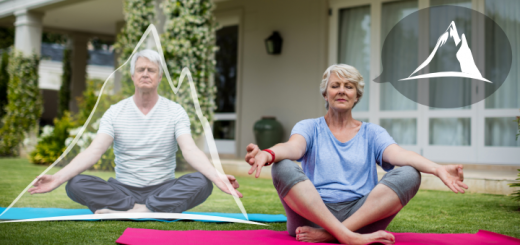

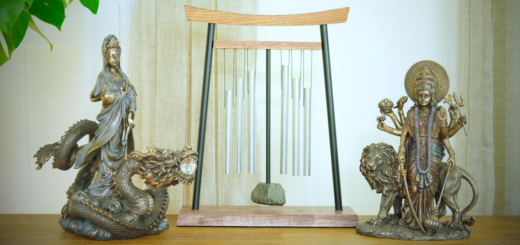
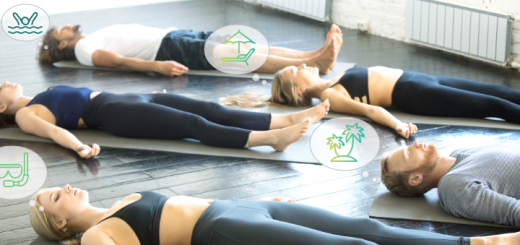















This is a terrific tool, Olga – thank you for putting it into simple, accessible words and visuals!
Thank you Julie! So happy to hear you find it useful.
As always, you explain the yoga tools in such a clear, ground-to-earth manner, something we can apply easily. I love it even more when you just so happen to be on the theme I did this week in class (being aware of your thoughts and emotions in order to modify them through practice). It will give me even more depth and more ideas for next week.
Thank you Manon! Writing this down always helps me clarify my thinking about those matters. I like things to be organized and clear for my own benefit, as well 🙂 Glad to hear that it gave you some ideas for future practices!
Thank you, this wonderful. I admire your talent